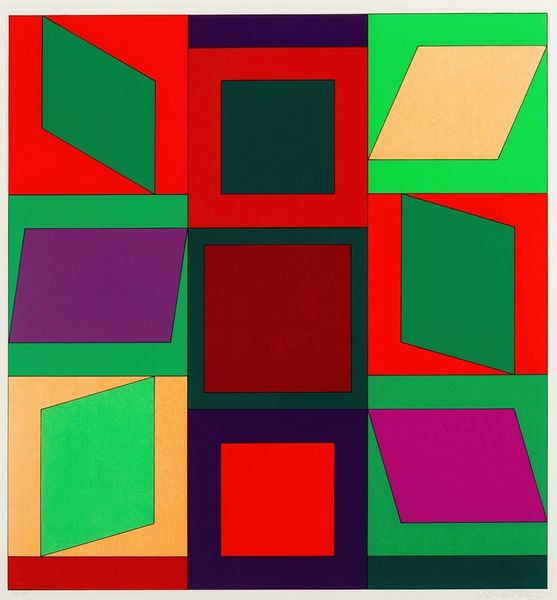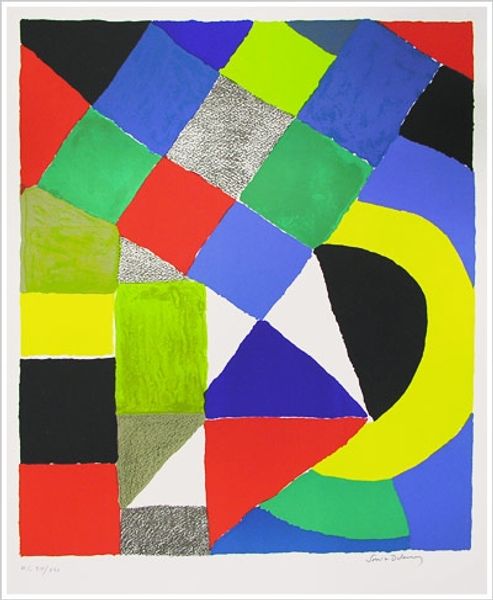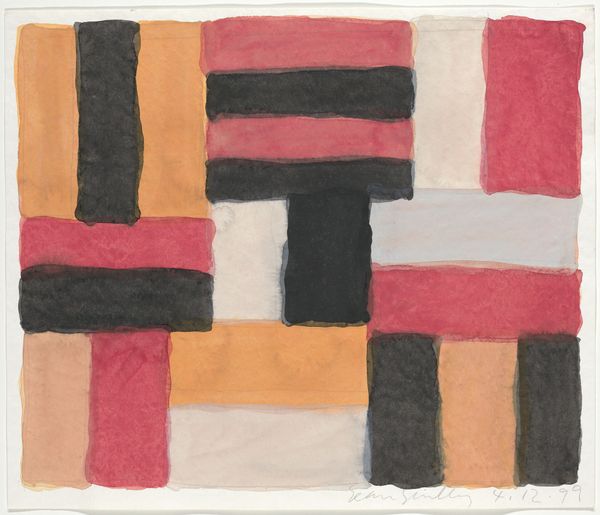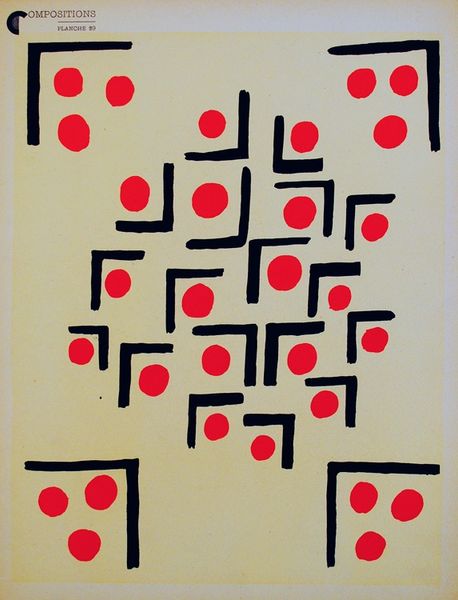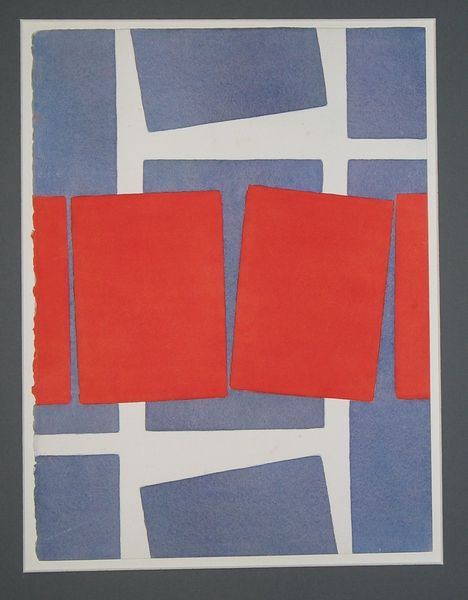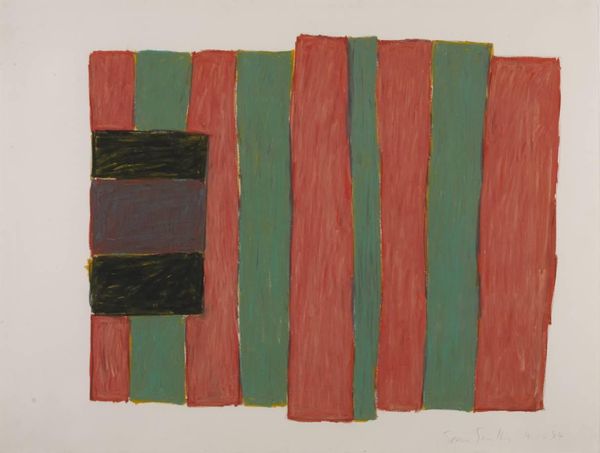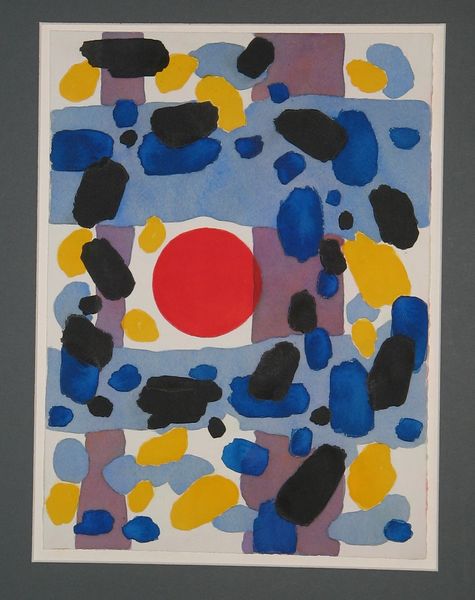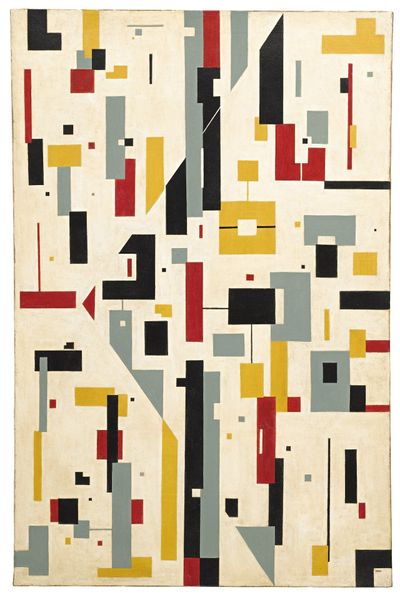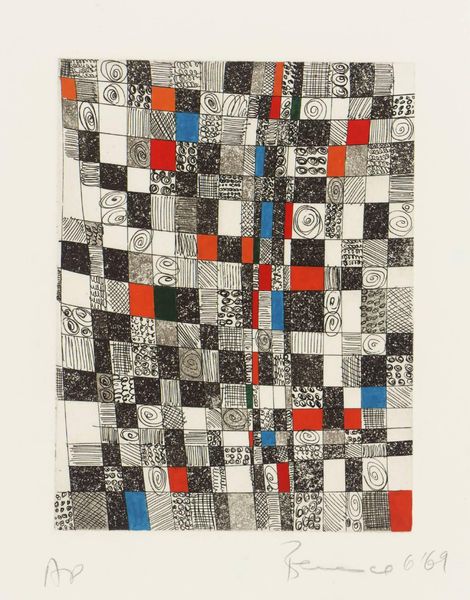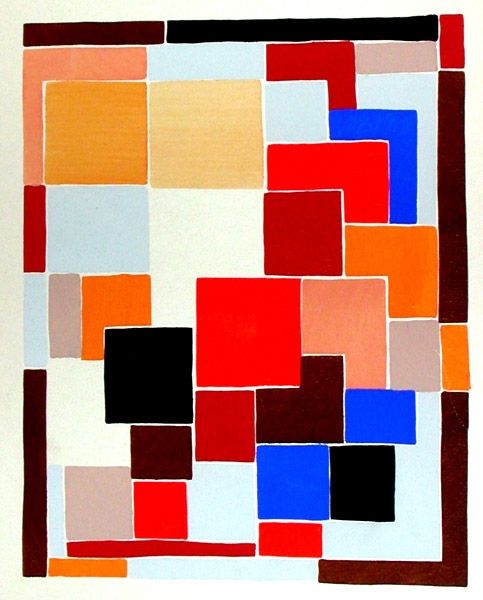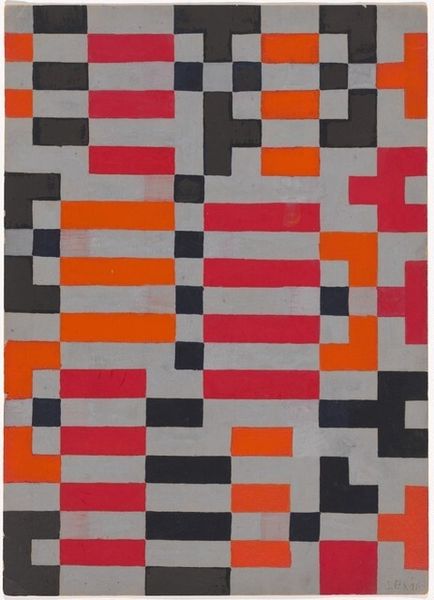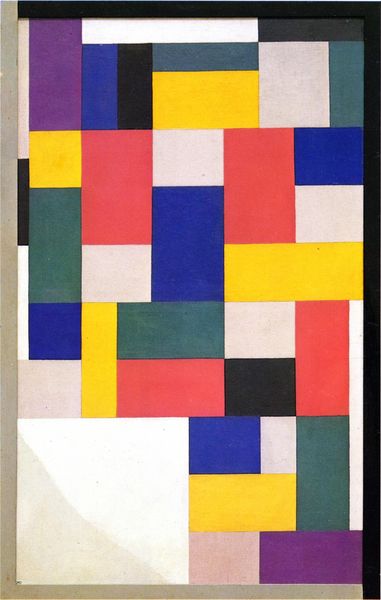
Copyright: Sonia Delaunay,Fair Use
Editor: So, this is Sonia Delaunay's "Composition 7" from 1930, apparently a collage with acrylic paint. I'm immediately struck by its playful yet structured nature. All those geometric squares, some filled with vibrant color, others with what looks like rudimentary grids. What do you see in this piece? Curator: Delaunay's work sings of simultaneity, doesn't it? This piece, in particular, speaks volumes about the burgeoning modern era. Consider those squares; they are individual, self-contained, yet placed together, they create a new visual language, reflecting a society pieced together. And notice the colour palette, so reminiscent of flags – could these be personal or national emblems distilled down to pure form? Editor: That's interesting, that the colour represents flags, a sort of memory, or the symbol itself. I was mostly drawn to the contrast between the solid blocks and the gridded ones. Why do you think Delaunay chose to juxtapose them like that? Curator: Exactly, you touch on something key, memory! Think of grids. The squares almost mimic urban planning, then disrupt the starkness with lively colour. That could be memory, that is the emotion that the urban lacks. Delaunay often intertwined the personal and public spheres, the inner and the outer worlds. She builds the composition like words in a line in poetry. So this juxtaposition isn't merely aesthetic; it's a symbolic representation of how we perceive, organise, and ultimately, experience reality. What do you feel when looking at the pattern? Editor: I feel calm; there is a playful quality to it, like I should move around the colors in new configurations. Now, considering your idea about memory, that seems to align with the sense that the artwork presents both the present and some cultural or architectural recollection of the past. I’ve certainly got more to think about now! Curator: And that’s the beauty of art, isn’t it? It's a mirror reflecting both the artist's intention and our own individual interpretations shaped by memory and culture.
Comments
No comments
Be the first to comment and join the conversation on the ultimate creative platform.
